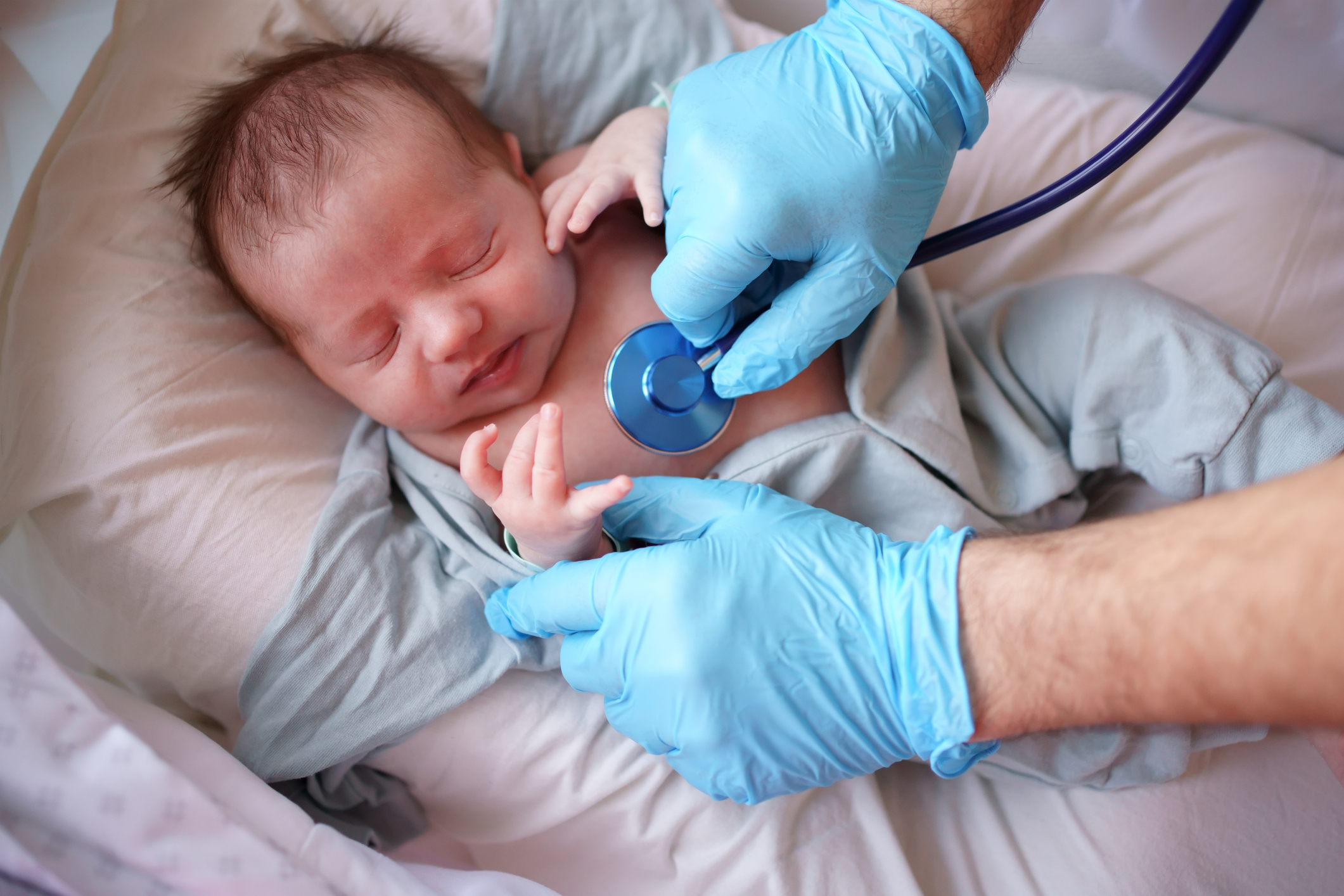
With COVID-19 rates rising around the country, and an updated vaccine now available, researchers are still trying to understand how immunity to COVID-19 works, and the best ways to build and sustain it.
One of the possibly richest areas of research might be infections among the very young, who tend to be spared from more serious COVID-19 disease. Hospitalization rates for infants four years old or under dropped to under 1 per 100,000 earlier this year, and have recently inched up slightly to 2 per 100,000 in the middle of September, compared to rates for people over 65 years old, which hit a low of 6 per 100,000 earlier this year and climbed up to 17.6 in September.
In a study published recently in the journal Cell, researchers led by Bali Pulendran, a professor of pathology, microbiology, and immunology at Stanford University School of Medicine, report some key differences in how infants and adults experience COVID-19 infections, which could lead to new ways of generating stronger and more durable immunity in the future.
Read more: Most Kids Do Not Get Severe COVID-19, Large Study Confirms
More From TIME
Pulendran and his team took advantage of samples collected from children at Cincinnati Children’s Hospital in 2020, before COVID-19 vaccines were available. Doctors took weekly nasal samples from the infants, who ranged in age from one month to nearly four years old, and some developed COVID-19 infections, so the researchers captured immune cell activity in the nasal passages before, during, and after infection. They found that unlike in adults, infants, especially the youngest babies, produce strong antibody responses against SARS-CoV-2, and these antibodies remained at relatively high levels throughout the study period of nearly a year.
“In the case of COVID-19, this is certainly unique and new,” says Pulendran. “We hadn’t expected to see this in infants. When adults get infected, they see an increase in the antibody response in the months following the infection, and then a sharp decay in that level. But in the babies, we didn’t see that happening. In fact, in some babies, the antibodies kept rising, and in others they plateaued, but they did not decline.”
The scientists also discovered another key difference in the way babies responded to the COVID-19 virus. While adults develop a strong inflammatory response in the blood soon after infection, as the virus triggers a flood of cytokines and other compounds that can cause complications associated with serious COVID-19 disease, infants did not develop this same reaction in the blood. In fact, in their blood, levels of these inflammatory markers did not increase appreciably.
However, these factors were abundant in the nasal passages of the babies, suggesting that for them, the battle between the immune system and the virus was occurring primarily in the mucosal tissues of the nose and upper respiratory tract, and not throughout the body in the bloodstream. The mucous membranes of these babies were flooded with interferon in particular, which is a potent immune hormone that can control how much a virus replicates. “It’s as if in infants the virus infects the upper respiratory tract but this infection is nipped in the bud there,” says Pulendran.
The reason that the antibodies generated by babies last so much longer than those generated by adults isn’t clear, but could have to do with the fact that infants may be relying on a type of immune response known as the innate response. It’s a first line of defense, and doesn’t involve educating immune cells like antibodies and T cells by exposing them to pathogens first. Because the immune systems in babies are still developing, it’s possible that they are more reliant on this more rudimentary, innate immune response and that could explain the longer lasting protection they have. But, says Pulendran, “it’s one of the great mysteries in immunology why in some cases like measles and chickenpox, you only need to have one infection during childhood and you are protected for your entire life, because the half life of the antibodies against them lasts years and years, but with other infections like flu and COVID-19, the half life of antibodies is more on the order of a few hundred days.”
There are tradeoffs to the infants’ immune responses, however. The scientists found that the antibodies the babies generated, while abundant and durable, were more specifically targeted to the virus that had caused their infections, meaning that if they were infected with another variant, these antibodies might not be as potent. In addition, the babies’ T cell responses, which in adults is responsible for protecting against serious disease, was somewhat muted as well. It’s not clear yet whether the other advantages of the infants’ response is enough to offset these other limitations.
Still, the results of the study point to some intriguing new strategies for generating stronger, and longer-lasting immune responses to the COVID-19 virus. Scientists are currently developing nasal vaccines, for example, which rely on generating mucosal immunity, and in the case of COVID-19, that may produce more durable immunity than injected vaccines. “These infants may be teaching us a lesson that certain pathways to immunity can be triggered by nasal vaccines that mimic the response we see in babies,” says Pulendran. “If only we can make a vaccine that mimics these same pathways, then we might be onto something.”
More Must-Reads from TIME
- Cybersecurity Experts Are Sounding the Alarm on DOGE
- Meet the 2025 Women of the Year
- The Harsh Truth About Disability Inclusion
- Why Do More Young Adults Have Cancer?
- Colman Domingo Leads With Radical Love
- How to Get Better at Doing Things Alone
- Michelle Zauner Stares Down the Darkness
Contact us at letters@time.com